Facilities maintenance issues can have a major impact on productivity in both industrial and commercial environments, with something as small as a leaking roof causing significant disruption and downtime. Belzona understands the importance of protecting roofs and how troublesome the smallest of roofing problems can be.
In actual fact, through all our years of experience, we have identified that 90% of the problems we are presented with today will arise from a mere 10% of the roof’s total area. This post looks at which roof types and roof areas are the most susceptible to damage, how roofing problems arise and how they can be categorised.
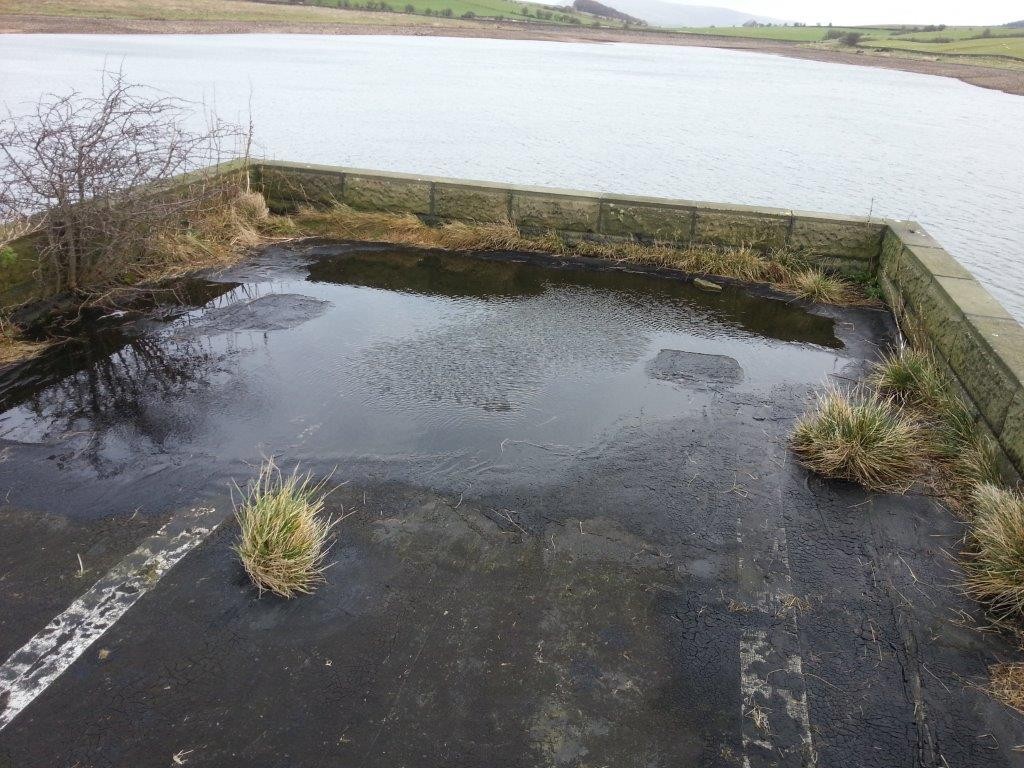
Flat roofs – Do the benefits outweigh the disadvantages?
Flat roofs are commonly chosen for industrial and commercial buildings, covering the vast majority of offices, factories and warehouses around the globe. However, despite their popularity, Belzona’s experience indicates that the bulk of roofing applications owe to the failings of flat roofs. This begs the question; do the benefits of flat roofs outweigh the disadvantages?
|
Currently, the flat roofing market is in a particularly healthy state. In fact, the UK commercial market covers close to 8 million m2 (86 million ft2) each year. It is easy to see why, as flat roofs do in fact offer a great deal of advantages. Notably, they are a low-cost option for many projects, being easier and more economical to install, inspect and maintain. Therefore, they prove highly popular with many commercial facilities and industrial buildings. |
However, flat roofs are historically problematic, suffering from an array of issues commonly arising from standing water and traditional roofing materials. Pooling of water on roofs can be attributed to either inadequate roofing materials or strangely, a roof being “too flat”. Flat roofs should actually feature a small gradient to allow sufficient rainwater run-off; otherwise, the weight of pooled water leads to deflection and subsequent issues. |
Currently, the flat roofing market is in a particularly healthy state. In fact, the UK commercial market covers close to 8 million m2 (86 million ft2) each year. It is easy to see why, as flat roofs do in fact offer a great deal of advantages. Notably, they are a low-cost option for many projects, being easier and more economical to install, inspect and maintain. Therefore, they prove highly popular with many commercial facilities and industrial buildings.
However, flat roofs are historically problematic, suffering from an array of issues commonly arising from standing water and traditional roofing materials. Pooling of water on roofs can be attributed to either inadequate roofing materials or strangely, a roof being “too flat”. Flat roofs should actually feature a small gradient to allow sufficient rainwater run-off; otherwise, the weight of pooled water leads to deflection and subsequent issues.
Of course, other roof variations, such as pitched or slanted roofs, will offer their own range of complications; however, complications with pooling water are not among these. This distinct disadvantage is one of several that can lead to serious problems and within that troublesome 10%. The most common problems can be split into three separate categories.
Dissimilar roofing materials
Most roofs form a veritable patchwork of materials, including anything from glass and plastics, to masonry and metals. Industrial roofs can be particularly troublesome as they boast a multitude of pipes, heating units and other protrusions that make the roof geometry complex to cover effectively. Whatever the combination of roofing materials is, ensuring long-term adhesion and sealing between all these dissimilar materials is crucial; however, it can prove problematic.
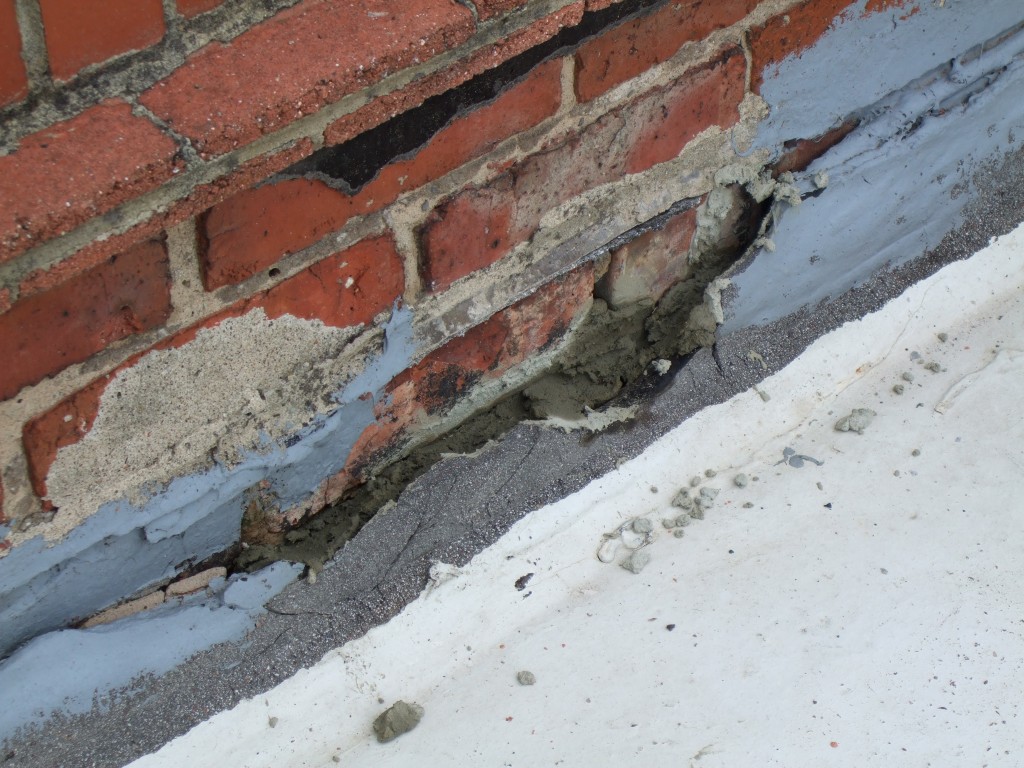
Flashings fall into this category and are a common fixture of both flat and pitched roofs, where metal, brick and felt or bitumen can often all meet. Exposed to varying temperatures and weather conditions, these materials can act differently, altering shape and size dependent upon that material’s characteristics. This can result in roofing weakness due to different expansion and contraction rates of the materials, allowing for water ingress through developing gaps.
Moreover, this category includes areas where two metals may meet. Dissimilar metals exposed to continuous weathering can potentially lead to galvanic corrosion which deteriorates the roof’s protection, loosening the materials and once again leading to issues like leaking.
Joints and seams
Joints and seams spell considerable trouble for many roofs, predominantly due to the effects of movement. All buildings will feature a degree of movement as a result of thermal expansion, contraction and wind, making joints and seams one of the most vulnerable areas. Resulting gaps or lips can be created, increased further by wind uplift, which may allow water ingress or exposure of unprotected materials to corrosion and weathering.
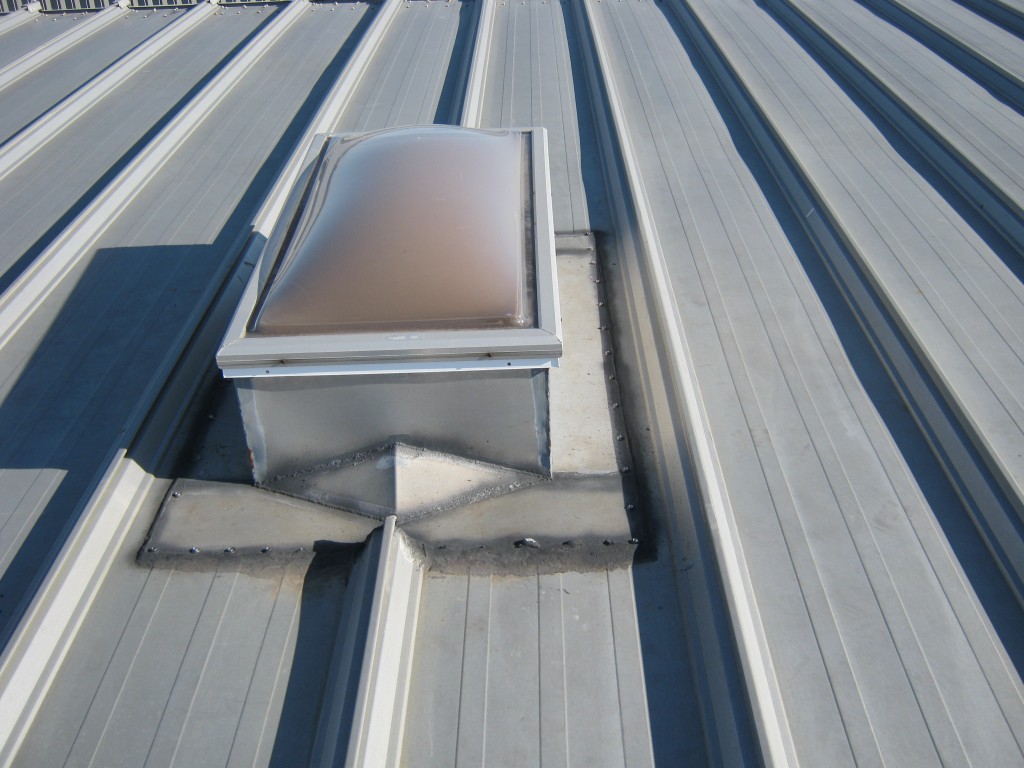
Found whenever two materials meet, joints and seams are a common sight on industrial roofs and one that occurs frequently on roofs covered using traditional materials. For instance, felt or bitumen surfaces are layered in strips and require heat to fuse them together and create one barrier of protection. However, continuous exposure to the elements can lead to delamination of the roofing material, creating areas of vulnerability, such as lips.
Similarly, parapet walls can also become vulnerable at the joints, normally caused by movement between the brickwork. This can develop through movement in the building or perhaps vegetation forcing through the joint, widening any gaps further and causing moisture ingress. Furthermore, this problem is shared by the seams around skylights and glazing bars, which degrade over time due to the dissimilar materials present and associated movement.
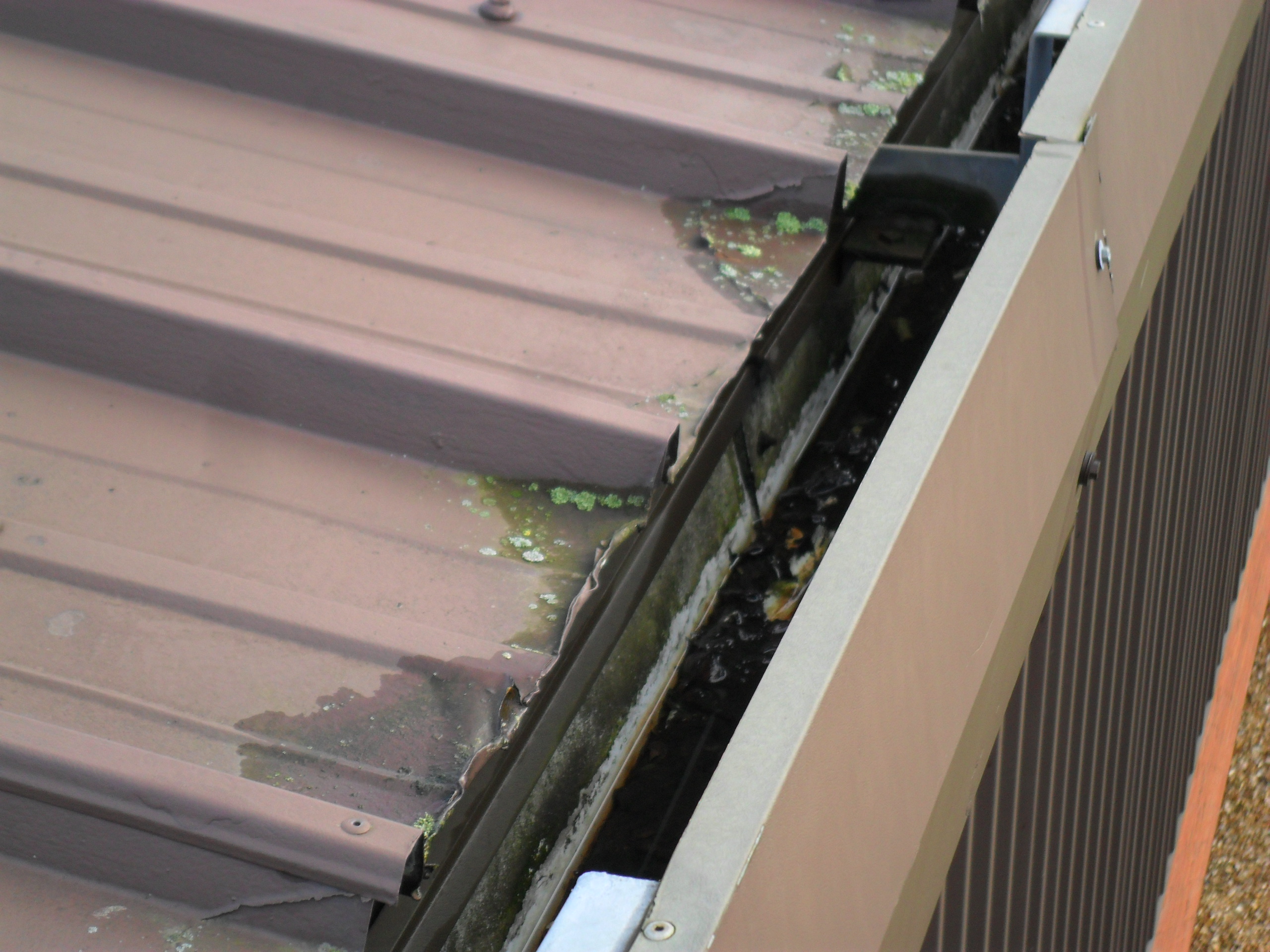
Unlike other problem areas in this category, cut-edge corrosion does not stem from two materials meeting. In fact, it falls into this category as it is an uncoated seam of metal that, left exposed, will corrode and result in the damage spreading as the metal is slowly eaten away. Corrugated metal roofs are susceptible as they are cut and the edges never receive protection, meaning when cut-edge corrosion begins, it is important to treat it as soon as possible. In certain instances, roof sheets need to be removed and replaced, which is extremely expensive.
Other forms of roofing damage
Lastly, roofs are susceptible to various forms of damage, both in the immediate and long term. Long-term damage will generally arise if roofing is left unmaintained, to suffer from aging and neglect. A key example of this type of damage involves single ply roof coverings. Overtime, rubber roofing materials are subjected to the environment and constant UV exposure. Once again, over this period the material expands and contracts, becoming brittle and losing its former flexibility, making it prone to cracking.
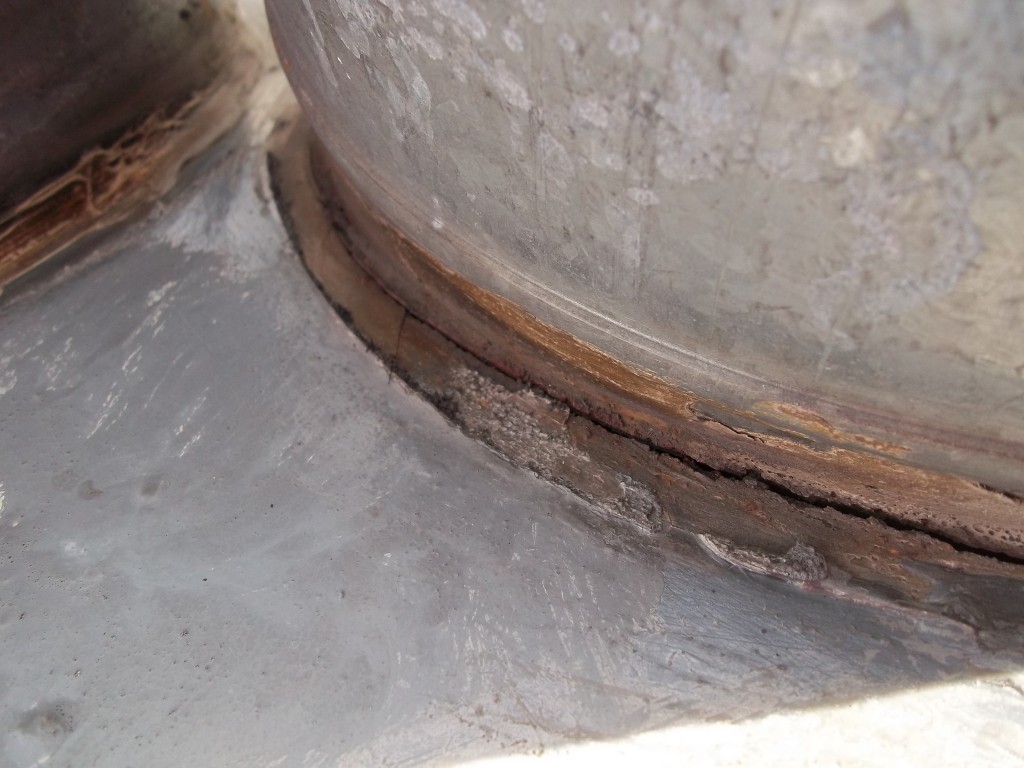
In addition to weathering, wildlife can have a detrimental effect on roofing materials, as bird litter can chemically attack the plastic coating on some roofing systems. High levels can cause damage and subsequent deterioration of the lining which can potentially lead to leaks or exposure of metal to corrosion.
With regards to immediate damage, working on roofs is also a common way in which damage can occur. As highlighted before, one of the key selling points of flat roofs is the ability to carry out maintenance and inspection easily. Whether it derives from maintenance or rooftop developments such as HVAC installation, extensions or rooftop fire escapes, the foot traffic over flat roofs can lead to immediate damage of the roofing substrate, through piercing and general wear.
Eliminating the troublesome 10%
For the majority of these problems, it is possible to find a repair solution. However, when left without treatment, the roof can become too damaged to refurbish, leaving costly replacement as the only option. Repair methods have evolved significantly over the years and eliminating the troublesome 10% is becoming far easier to do since the advent of liquid and cold-applied technologies. To find out more about the evolution of materials for roofing maintenance, look out for our future blog post entitled – Breaking Tradition: The Evolution of Roofing Maintenance.



